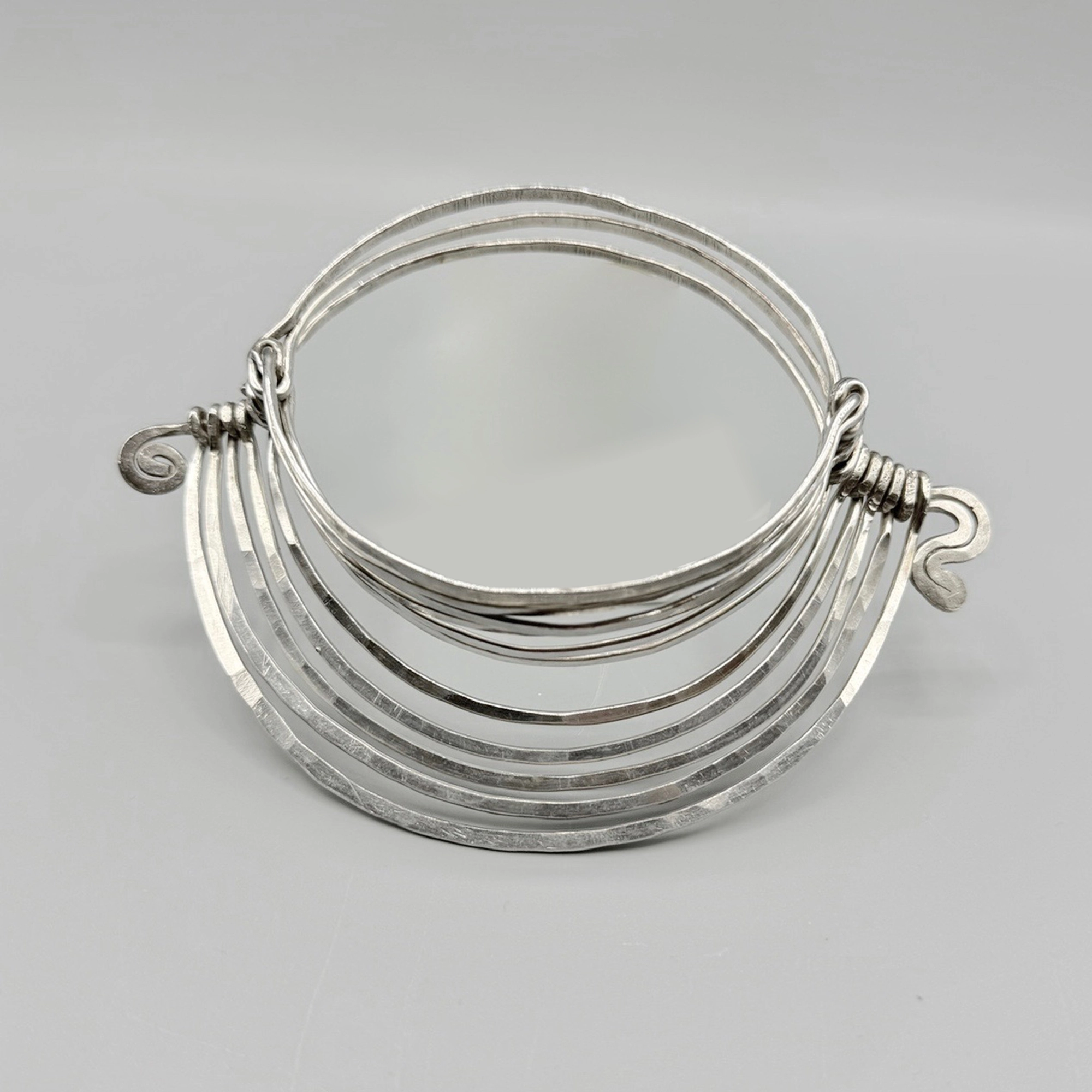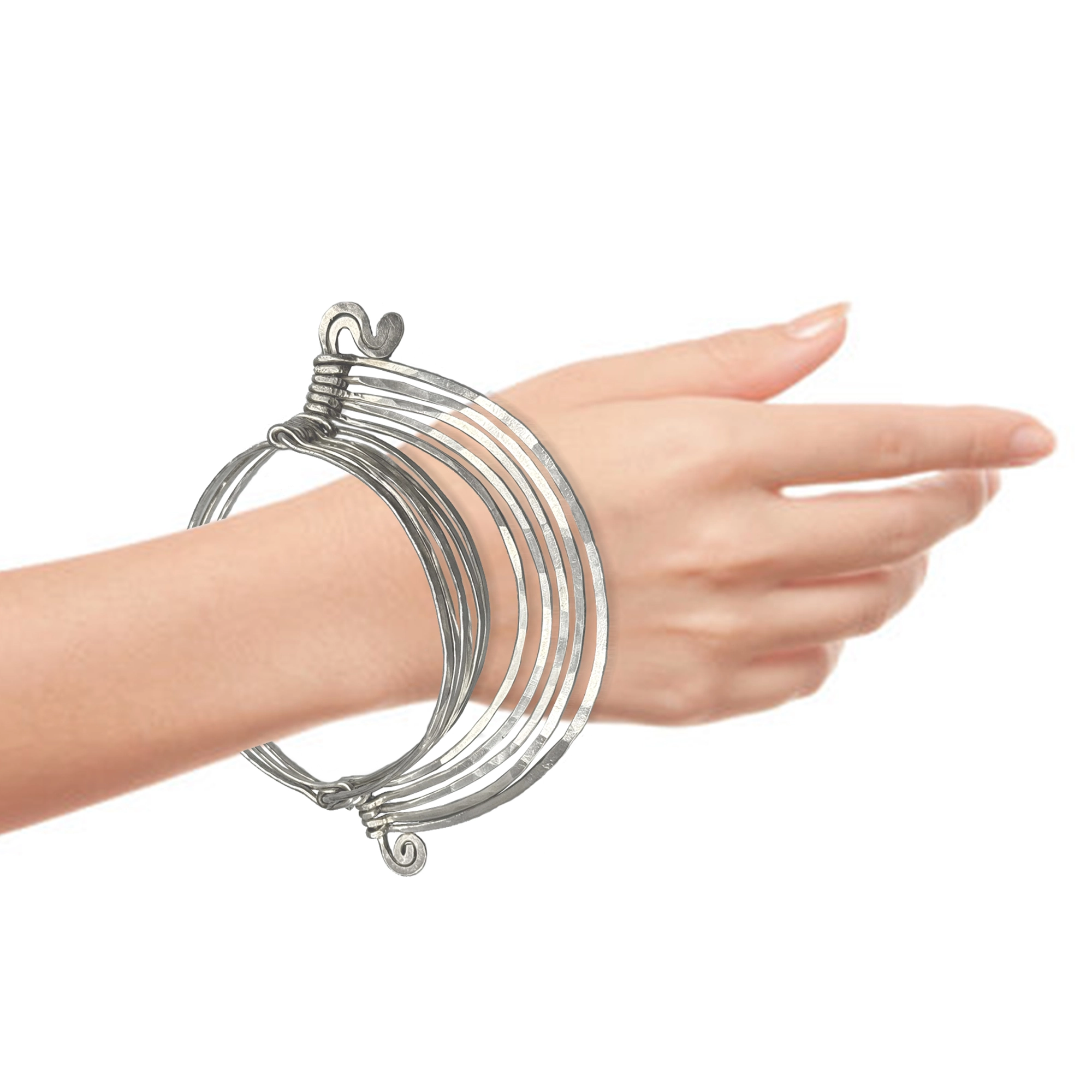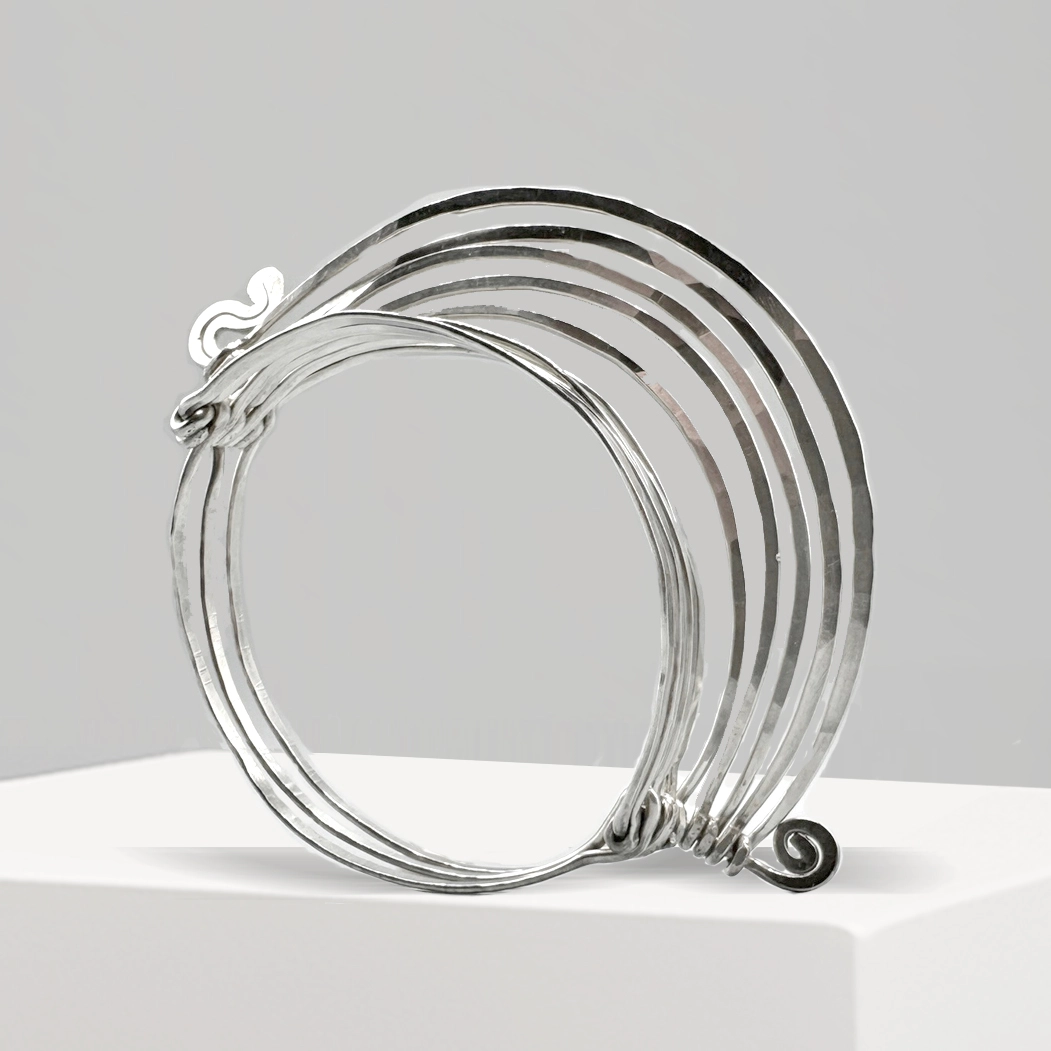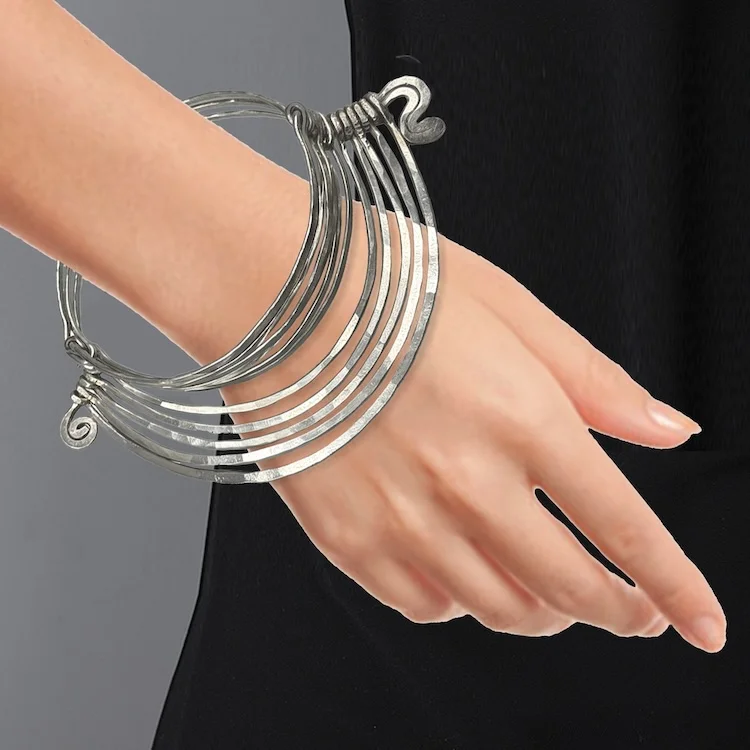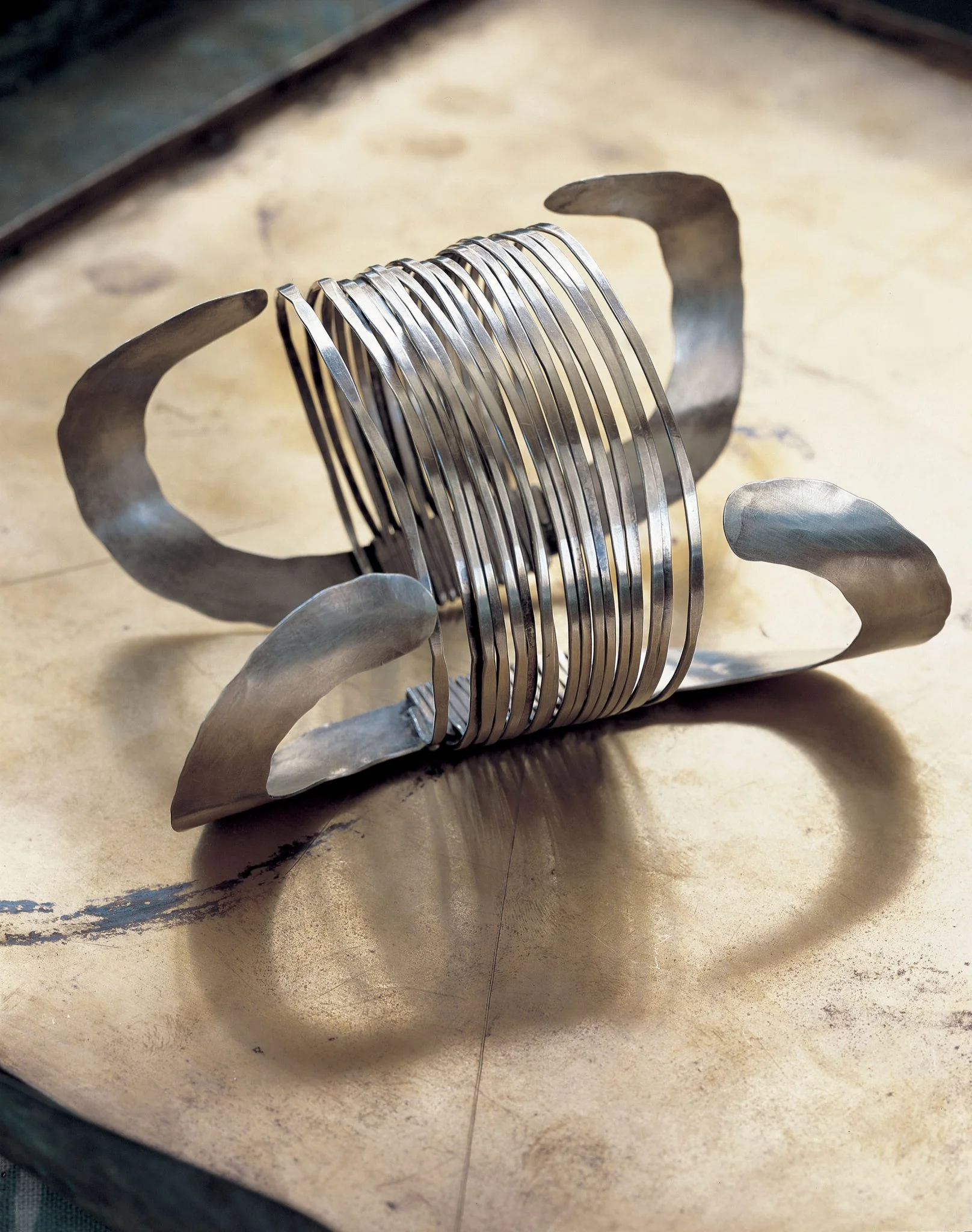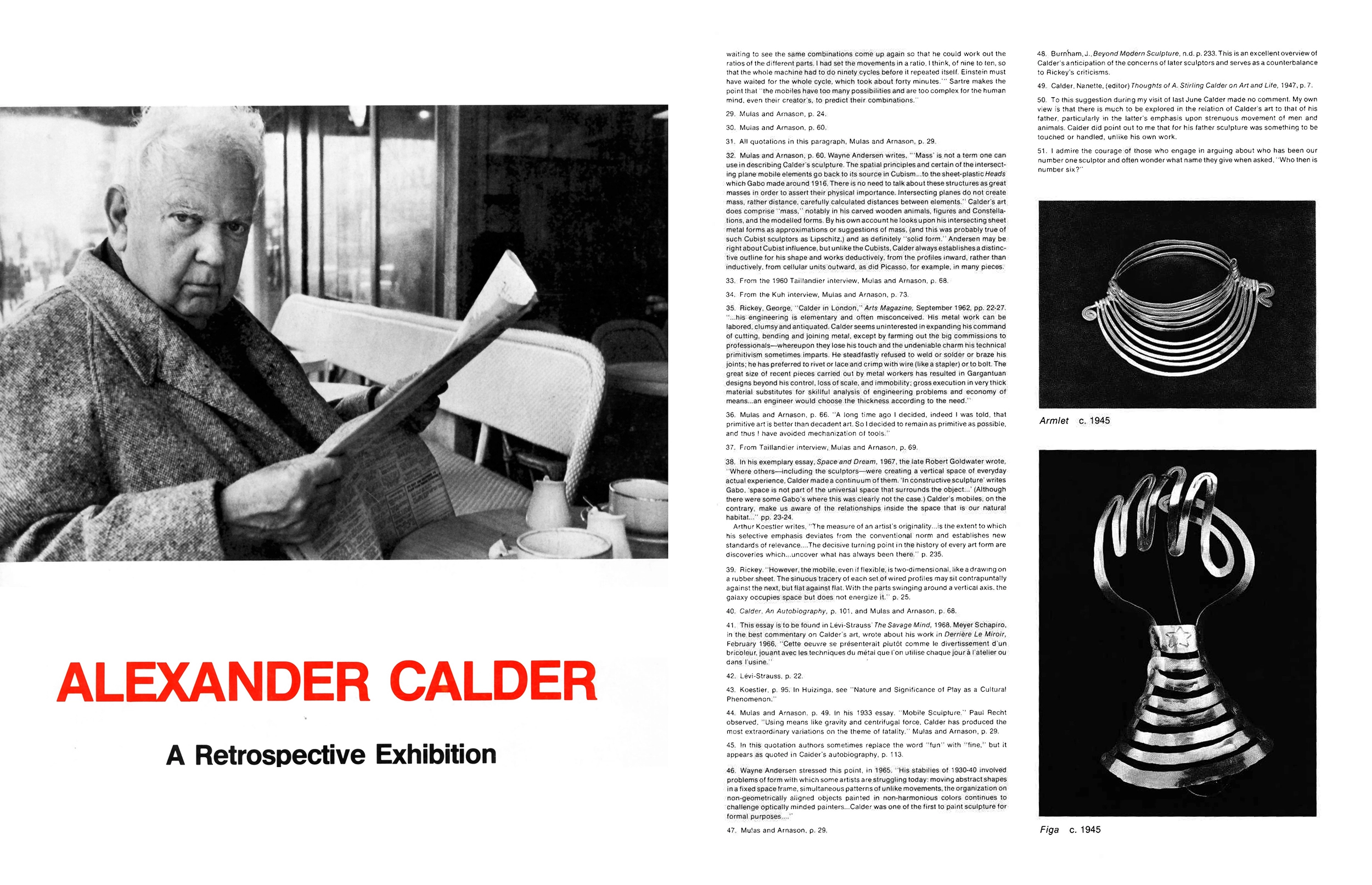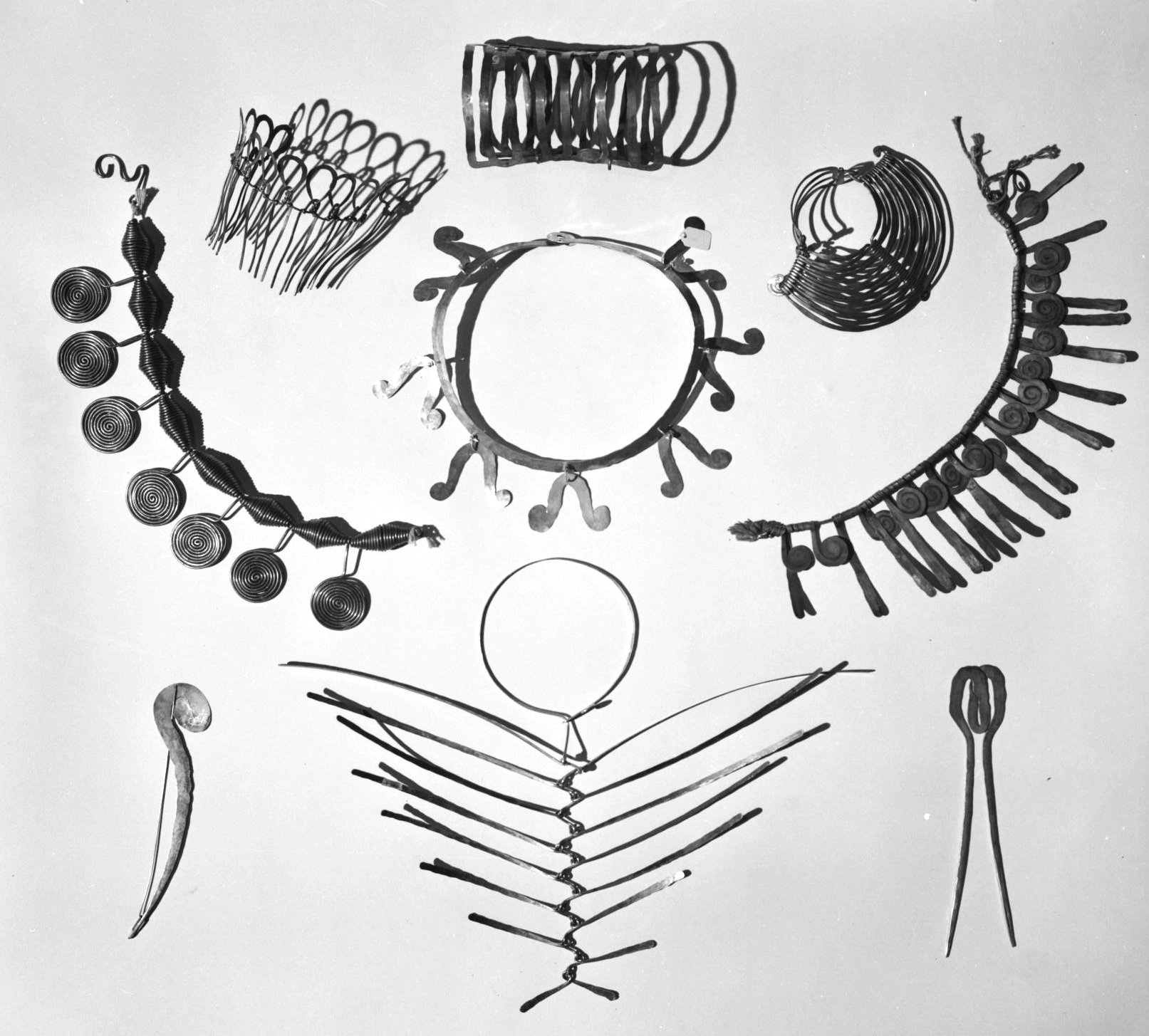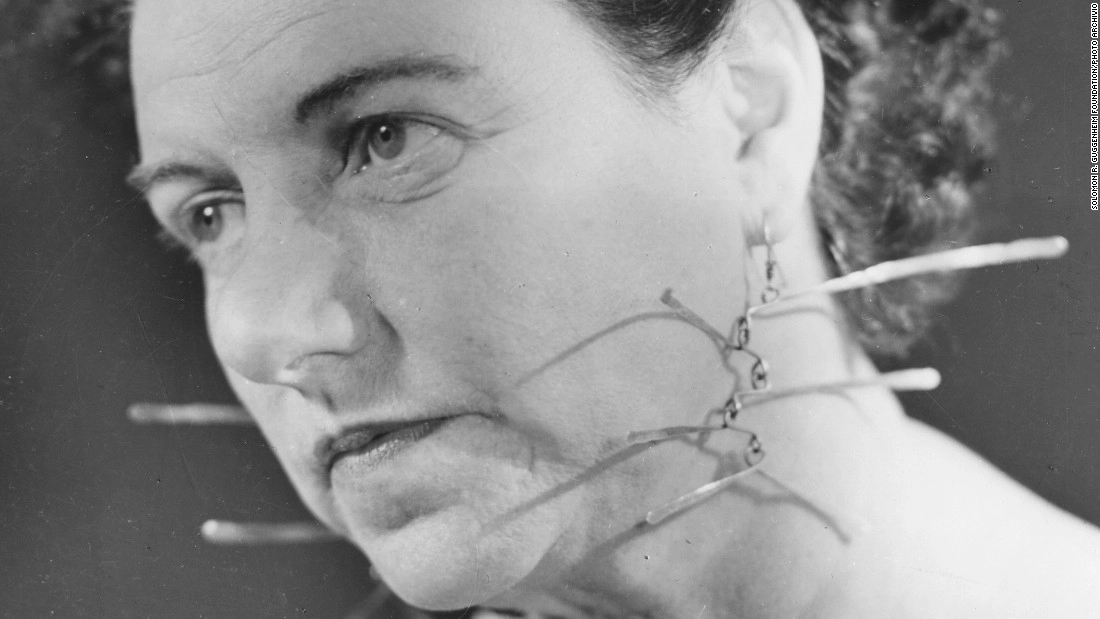Alexander Calder
Bracelet, circa 1945
silver wire, unique
4 x 5 1/2 x 2 inches
This work is registered in the archives of the Calder Foundation, New York, under application number A12868
Provenance
Perls Galleries, New York
The James and Marilynn Alsdorf Collection, acquired from the above, 1972
Christie's, New York, November 19, 2019, Lot 662
Private Collection, New York, acquired from the above, 2019
Literature
Museum of Contemporary Art Chicago, Alexander Calder: A Retrospective Exhibition, Work from 1925-1974, 1974, this Bracelet reproduced.
G. Di San Lazzaro, Homage to Alexander Calder, Paris, 1972, this Bracelet reproduced page 90.
Calder: In Time, Paris, Musée des Arts Décoratifs, 1989, this Bracelet reproduced page 270.
The Intimate World of Alexander Calder, 1990, Harry N. Abrams Inc., this Bracelet reproduced page 270.
Calder Jewelry, 2007, Edited by Alexander S. C. Rower and Holton Rower, Yale University Press, a similar Bracelet reproduced in color, pages 7 and 261.
Exhibited
New York, Perls Galleries, Calder: Jewelry, November-December 1966.
Museum of Contemporary Art Chicago, Alexander Calder: A Retrospective Exhibition, Work from 1925-1974, October-December 1974
4 x 5 1/2 x 2 inches
This work is registered in the archives of the Calder Foundation, New York, under application number A12868
Provenance
Perls Galleries, New York
The James and Marilynn Alsdorf Collection, acquired from the above, 1972
Christie's, New York, November 19, 2019, Lot 662
Private Collection, New York, acquired from the above, 2019
Literature
Museum of Contemporary Art Chicago, Alexander Calder: A Retrospective Exhibition, Work from 1925-1974, 1974, this Bracelet reproduced.
G. Di San Lazzaro, Homage to Alexander Calder, Paris, 1972, this Bracelet reproduced page 90.
Calder: In Time, Paris, Musée des Arts Décoratifs, 1989, this Bracelet reproduced page 270.
The Intimate World of Alexander Calder, 1990, Harry N. Abrams Inc., this Bracelet reproduced page 270.
Calder Jewelry, 2007, Edited by Alexander S. C. Rower and Holton Rower, Yale University Press, a similar Bracelet reproduced in color, pages 7 and 261.
Exhibited
New York, Perls Galleries, Calder: Jewelry, November-December 1966.
Museum of Contemporary Art Chicago, Alexander Calder: A Retrospective Exhibition, Work from 1925-1974, October-December 1974
Additional Photos
Best known for creating kinetic sculpture, including mobiles and moving stabiles, Alexander Calder also created one-of-a-kind jewelry, often with the same materials used to create sculpture. Calder created his first pieces of jewelry for his sister's dolls when he was a child.
